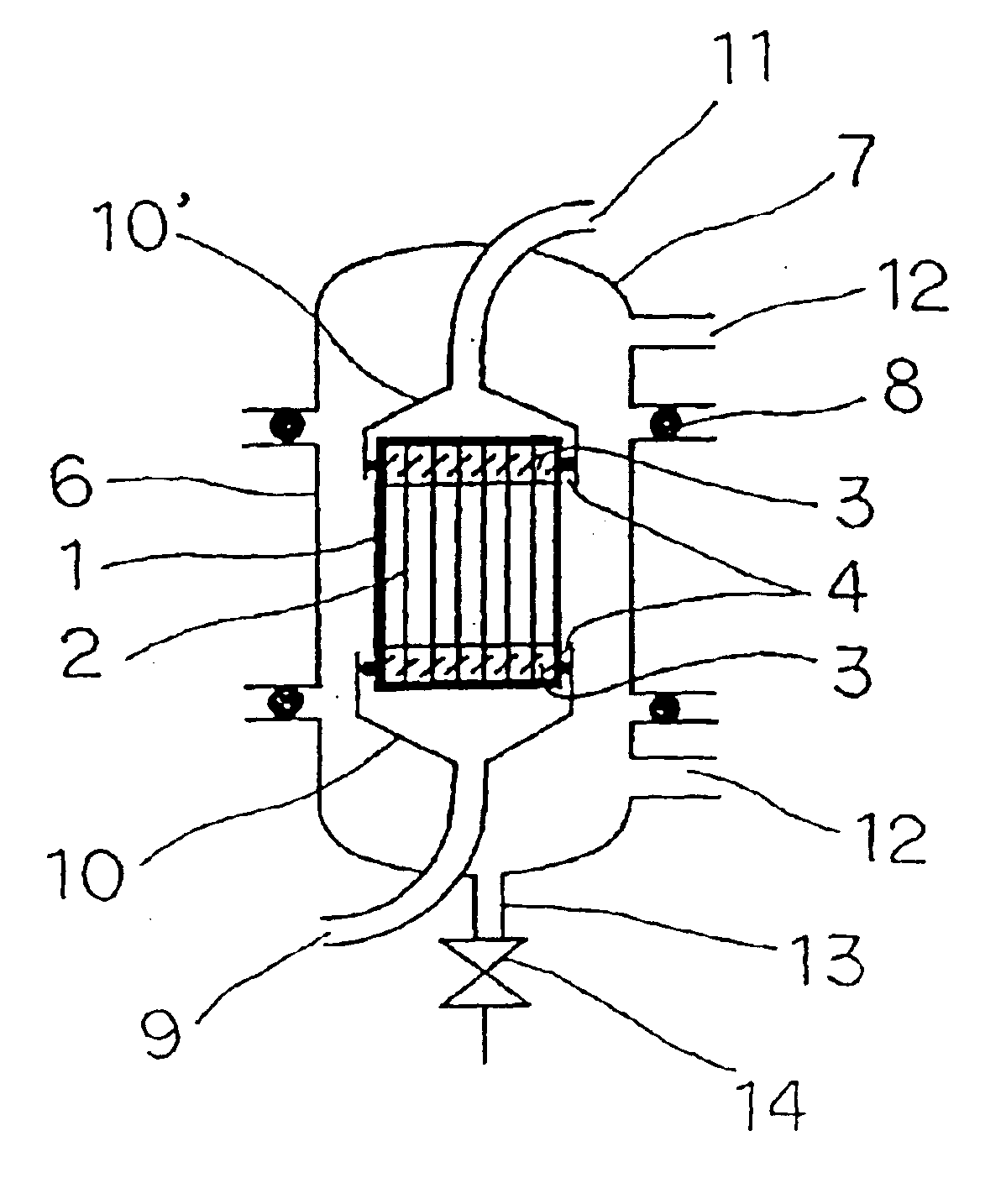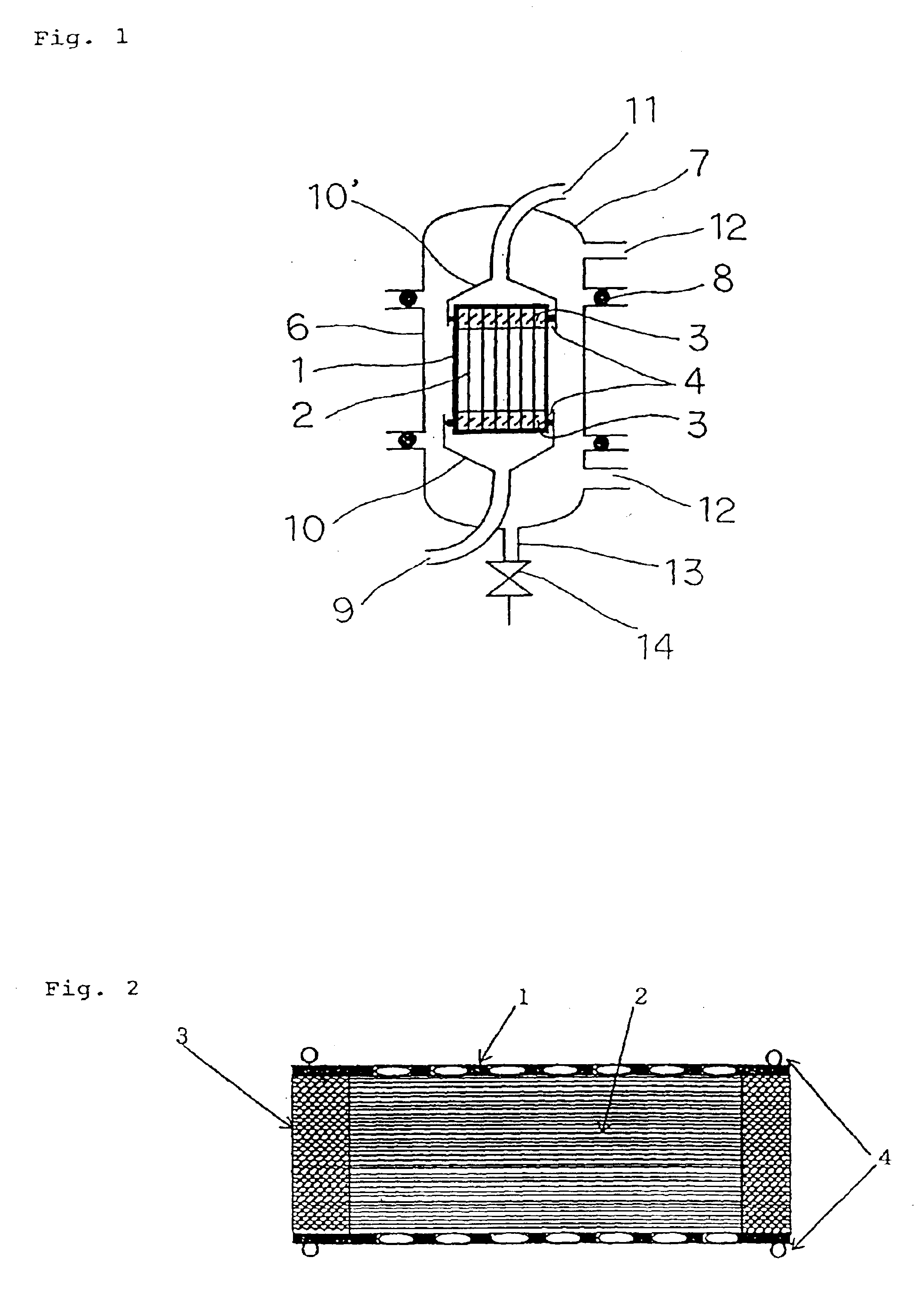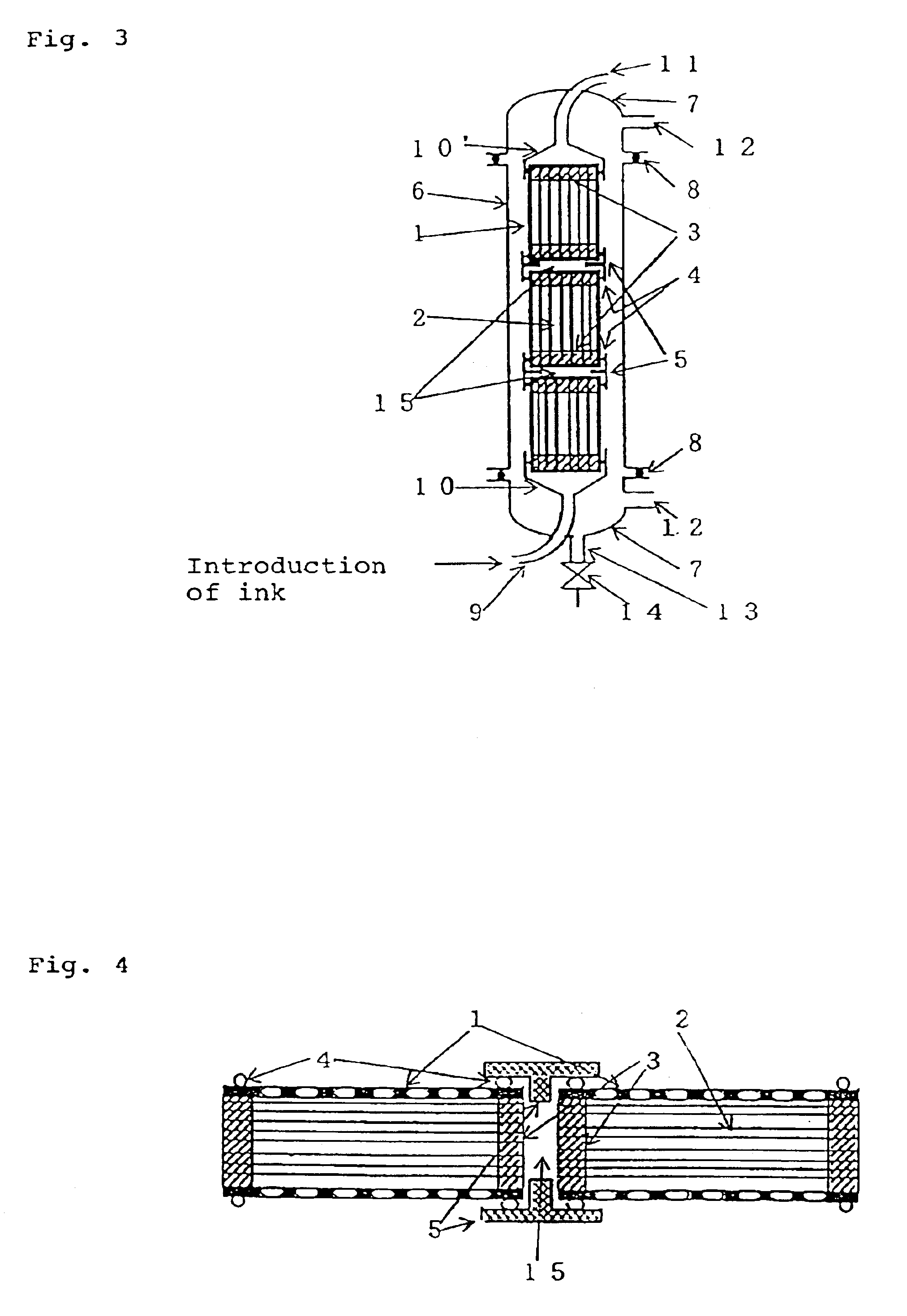Hollow fiber membrane for the degassing of inks, ink degassing method, ink degassing apparatus, method for the fabrication of an ink cartridge, and ink
a technology of ink degassing and fiber membrane, which is applied in the direction of liquid degasification, membranes, separation processes, etc., can solve the problems of insufficient degassing, ink may be deteriorated, and print dot loss, and achieve the effect of efficient degassing
- Summary
- Abstract
- Description
- Claims
- Application Information
AI Technical Summary
Benefits of technology
Problems solved by technology
Method used
Image
Examples
example 1
A composite hollow fiber membrane having an inner diameter of 200 μm and a membrane thickness of 40 μm and consisting of a nonporous layer formed of a segmented polyurethane [Tecoflex EG80A (trade name), manufactured by Thermedix Co., Ltd.; MRF=15; density=1.04] and porous layers formed of high-density polyethylene [Hizex 2200J (trade name), manufactured by Mitsui Chemical Co., Ltd.; MRF=5.2; density=0.968] and disposed on both sides of the nonporous layer was provided. The thickness of the nonporous layer was 0.8 μm and the pore diameter of the porous layer was 0.1 μm. This composite hollow fiber membrane had an oxygen permeation flux of 7.7×10−9 cm3 / (cm2·Pa·sec) and a nitrogen permeation flux of 3.0×10−9 cm3 / (cm2·Pa·sec). In a perforated cylindrical case made of a modified PPO resin, a large number of hollow fibers comprising this hollow fiber membrane were bundled and fastened together with fastening members comprising an epoxy resin so that both ends of the hollow fibers were le...
example 2
A hollow fiber membrane element having the same construction as that of Example 1, except that the effective hollow fiber length was 60 cm, was fabricated. This hollow fiber membrane element was installed in a canister and used to degas an ink under the same conditions as in Example 1.
Before the degassing treatment, the dissolved gas concentrations in the ink were 13.9 mg / L for nitrogen and 8.3 mg / L for oxygen. As a result of this treatment, the dissolved nitrogen and oxygen concentrations were reduced to 2,330 μg / L and 280 μg / L, respectively.
example 3
Three hollow fiber membrane elements similar to that fabricated in Example 1 were connected in series by means of connectors as illustrated in FIG. 4. The connected hollow fiber membrane elements were installed in a canister as illustrated in FIG. 3, and used to degas an ink under the same conditions as in Example 1.
Before the degassing treatment, the dissolved gas concentrations in the ink were 14.1 mg / L for nitrogen and 8.2 mg / L for oxygen. As a result of this treatment, the dissolved nitrogen and oxygen concentrations were reduced to 1,800 μg / L and 95 μg / L, respectively.
PUM
| Property | Measurement | Unit |
|---|---|---|
| thickness | aaaaa | aaaaa |
| inner diameter | aaaaa | aaaaa |
| inner diameter | aaaaa | aaaaa |
Abstract
Description
Claims
Application Information
 Login to View More
Login to View More - R&D
- Intellectual Property
- Life Sciences
- Materials
- Tech Scout
- Unparalleled Data Quality
- Higher Quality Content
- 60% Fewer Hallucinations
Browse by: Latest US Patents, China's latest patents, Technical Efficacy Thesaurus, Application Domain, Technology Topic, Popular Technical Reports.
© 2025 PatSnap. All rights reserved.Legal|Privacy policy|Modern Slavery Act Transparency Statement|Sitemap|About US| Contact US: help@patsnap.com



